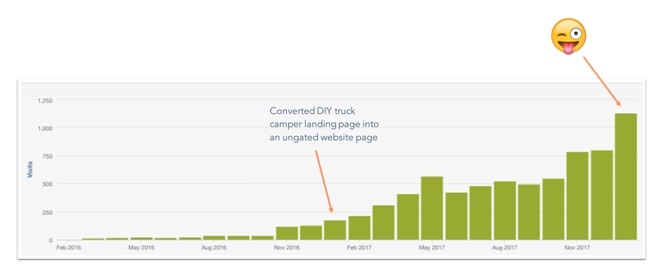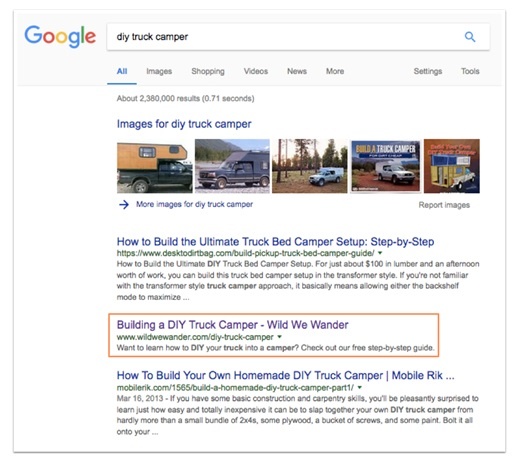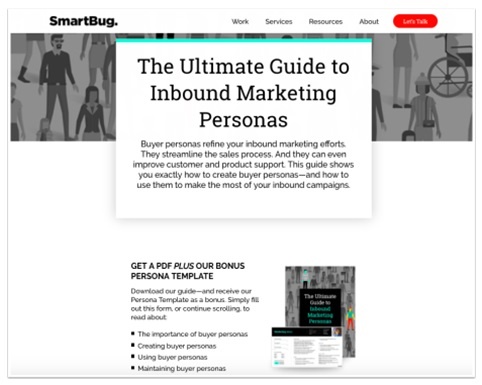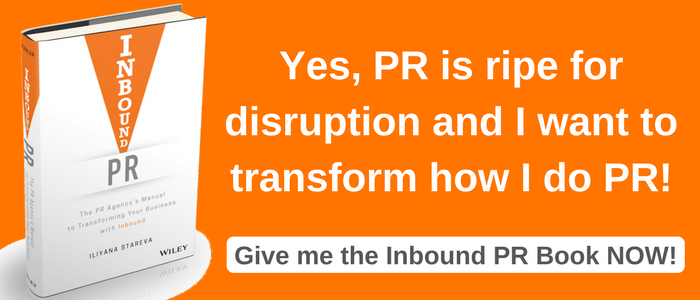.jpg?width=700&height=300&name=How%20to%20Create%20a%20Successful%20Content%20Marketing%20Strategy%20in%202018%20(and%20Beyond).jpg)
This is a guest post by Justin Champion.
We live in an information age. If you have a problem you’re trying to solve or want to learn more about it, you can find an answer in just a few seconds with the click of a button on Google. And just how many people are searching for information? Well, Google now processes over 90,000 search requests per second.
The role search engines like Google play in this process is to connect people with the most relevant and valuable content based on their search query.
So, how do you attract relevant traffic from search engines?
You have to produce high-quality content that solves for both the search engine and the website visitor.
But how do you do this?
During January of last year, I hosted a content experiment with the goal of helping people create content that solves for both search engines and their website visitors.
During this experiment I used my alternative lifestyle brand, Wild We Wander, to test a new content strategy framework. I deconstructed our 76-page DIY truck camper guide my wife and I wrote in 2016 into an ungated website page and now offer the content as a packaged downloadable resource. This way, interested readers have the option to download the content and take it with them in the form of a guide.
The result? In 12 months, our non-paid, organic traffic coming from search engines went up 747%.

Additionally, our website page ranks at the second position on Google for the broad term ‘DIY truck camper’ – the exact term we were trying to rank for in the first place.

Wild We Wander wasn't the only website to receive results like this. For example, I worked with digital marketing agency, and top-rated HubSpot partner, SmartBug Media, to deconstruct one of their top-performing content offers into an ungated website page and offer the content as a packaged downloadable resource (you can view it here).
The result? In three months, their website page was visited over 4,800 times and their packaged resource was downloaded more than 1,000 times.

How do you create content that increases your website traffic and ultimately get more leads?
I compiled everything I’ve learned over the past decade as a digital marketer and I turned it into my first book, Inbound Content: A Step-by-Step Guide to Doing Content Marketing the Inbound Way, which publishes on April 24, 2018.
What makes this book different from any other content marketing book of its kind?
- It’s actionable. This way you can apply what you’re learning to your business. After each chapter there is a list of homework assignments you can do to help you transform into an efficient and effective content marketer.
- Once you finish the book you’ll be ready to take HubSpot Academy’s final exam, earning yourself a valuable industry credential. You will join a network of more than 120,000 (and growing) certified professionals that are transforming the way the world does business with HubSpot Academy.
Creating remarkable content takes a lot of time and effort, I don’t want to discount that. But it is doable and anyone can succeed with the right mindset and action plan.
Take the DIY truck camper offer, the 76-page guide, I created. That was another content experiment of mine on how to create a remarkable piece of content that I pieced together from a series of planned content initiatives. Below is an overview of how I created this guide in four months in my spare time:
1. Identify guide’s topic, something that's relevant to your business
When you break it down, a guide is just an idea with supporting subtopics. Start with a topic that you want to write about, something that can be easily expanded upon and supports your business offerings.
For me, that was converting my truck into a DIYed camper.
This guide would serve as a top of the funnel offer, attracting visitors interested in learning more about converting their truck into a functional living space.
2. Identify supporting subtopics that strengthen your guide’s overarching topic
Once you have a topic to work with, jot down as many supporting topics that you can think of that bring value to or strengthen your overall theme; the more the better.
Next, sift through the list of supporting subtopics and determine which topics provide the most value and flow well with each other. Think of this exercise like a puzzle; you’re looking for a list of pieces that when put together equal a larger picture, in this case, your guide.
Voila. This is what the outline of your guide should look like: a strong topic with a supporting cast strong enough to be written about on its own, but when puzzled together, create a larger picture, Wild We Wander’s DIY Truck Camper Guide.
3. Write a blog post for each supporting subtopic
This may sound odd, but at this point forget about the guide. The goal at this point is to focus on each blog post. If you create great blog content around your supporting topic, then you’re creating great content for your guide. This is because each blog post will be repurposed into a chapter in your guide.
For example, an 800-word blog post could be expanded to 1,000-2,000 words in your guide. A helpful technique to keep your blog posts short and to the point is the use of bullet-pointed lists. Bullet-pointed lists allow you to list out multiple ideas, making it easier to expand upon later.
The beauty of this approach is you are developing your guide over time through a series of blog posts (i.e. four hours per week). And because it takes time—usually 3-4 weeks for Google to index a page—by the time your guide launches, search engines will have had ample time to index your blog posts’ content.
Lastly, every post should have a relevant call-to-action, otherwise it’s a missed opportunity. Because you’re writing each blog post before the guide is compete, consider inserting another relevant call-to-action until the guide is available. If you don’t have one, then promote subscribing to the blog.
4. Re-purpose your blogs posts into guide chapters
Once you have written a blog post for each supporting subtopic, you have the majority of the content you’re going to need for your guide.
Next, you’ll want to identify a guide template to house all of your information. HubSpot offers various free guide templates in our marketing resources library to help you get started. This way you can focus more on the writing as opposed to format and design.
Once you’ve determined a guide template, below is a list of steps on how to best approach completing your guide:
- Open guide template
- Update table of contents to reflect each chapter
- Copy and paste blog material as a chapter
- Read through each chapter and expand content. If you used bullet pointed lists, then focus on further explaining each point. This is the most efficient way to expand content.
- Write an introduction
- Write a conclusion
- Update design elements to reflect your brand platform
5. Update your blog post call-to-actions
The beauty of a blog is it can easily be updated. Once you have created a conversion funnel to host your guide, go back to each supporting subtopic blog post and update call-to-actions accordingly.
The above is just a sample of what you’ll learn in Inbound Content. If your goal is to transform your business’s content process, then consider Inbound Content your textbook.
In March 2018 I hit the road with my Airstream and truck camper with the goal of educating and inspiring people to create more effective inbound content.
I’ll be doing this by hosting a series of free content marketing strategy workshops across the United States while living and working from the road.
This workshop series follows lessons from Inbound Content, as well as offers a glimpse into where my research and ideas are headed next. In the ever-evolving world of digital media, you have to stay on top of your game or you’ll be left behind.
And if you can't make it onsite, you can always sign up for HubSpot Academy's free content marketing strategy workshop here.
How do you create successful content?







